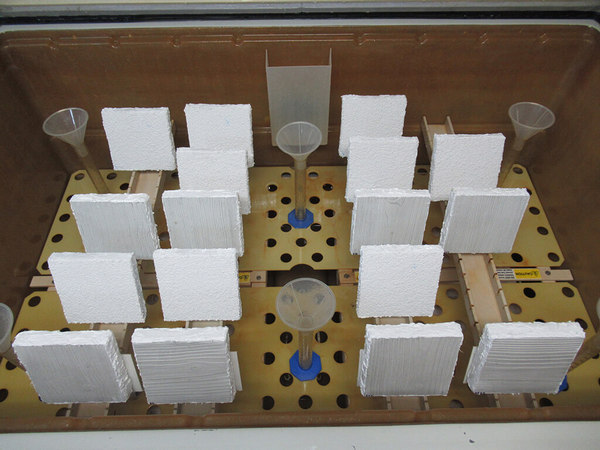-
What is the standard solution for the salt spray test?
Edited by:Read:The standard solution used in the salt spray test is usually sodium chloride solution. The preparation method can be referred to ASTM B117, ISO 9227 and other related standards. The specific concentration and preparation requirements may vary according to different standards and applications.
In salt spray testing, a 3.5% (mass fraction) sodium chloride solution is typically used. This corresponds to 35 grams of sodium chloride per litre of solution. In preparing the solution, pure water is usually used as the solvent and an appropriate amount of sodium chloride is dissolved in it to bring it to the target concentration.

In practice, specialised salt spray test equipment, such as a brine spray box, can also be used in order to keep the concentration of the salt solution stable. This equipment circulates and sprays the brine solution to maintain a constant concentration and uniform spray during the test.
It should be noted that the sodium chloride solution used in the salt spray test is a corrosive solution and should be properly disposed of after use to prevent negative impacts on the environment. At the same time, before conducting the salt spray test, it should also be ensured that the specimen used meets the requirements of the relevant standards, and appropriate safety measures should be taken to protect the safety of experimental personnel and equipment.
- 2024-04-19Paper ring compression strength tester standards
- 2024-04-19Cupping tester standards
- 2024-04-19Rubber and plastic tensile tester standards
- 2024-04-19Taber 1750 wear-resistant tester standards
- 2024-04-19Stone Chip Resistance Gravelometer standards
- 2024-04-18Diaper absorption speed tester standards
- 2024-04-18Diaper leakage tester technical indicators
- 2024-04-18Paint film impact resistance tester standards
- 2024-04-18Low temperature brittleness tester principle
- 2024-04-18Battery separator permeability tester technical indicators



